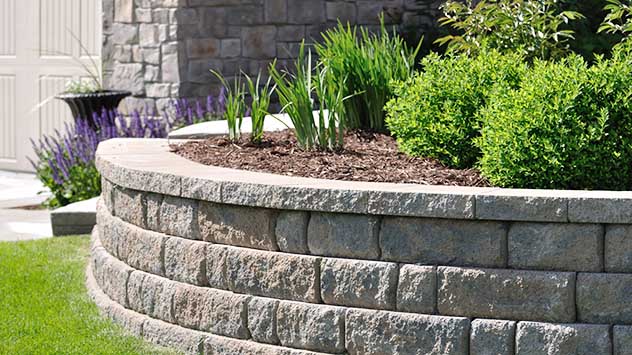What Size Gravel For Retaining Wall Base

They re 16 to 18 in.
What size gravel for retaining wall base. A handheld tamping tool can really help in getting the gravel level but you re right one stray stone can throw off the entire operation. Crushed stone 67 sizes from 3 4 down to fine particles. More information on retaining walls where the base trench steps up a slope. This is standard for all types of landscape walls.
Fill the trench with a 2 to 3 inch layer of paver base. The various sized crushed gravel with the fines helps ensures for appropriate compaction. Choose a paver base with landscape rocks between 1 2 inch and 3 4 inch in size. 25 mm for each 1 ft 300 mm of wall height for the amount or buried block that is needed.
The leading cause of wall failure. 600 mm wide the length of the wall the depth of the trench will be 6 in. 150 mm plus an additional 1 in. For heavy duty walls up to 30 ft.
Tall go with full size blocks. Due to soil erosion your retaining wall should be built on a solid foundation made from paver base. A retaining wall must have the strength to hold back the weight of the soil plants and sometimes small structures behind it. This prevents water from building up behind the wall.
Dig a base trench 24 in. The wall gets its strength from a sturdy base consisting of gravel. Typically this gravel ranges in diameter from 2 5 inches 6 35 centimeters to 4 inches 10 16 centimeters. Long x 6 to 8 in.
Gravel known as size 1 is relatively large. Similar to gravel paver base is a form of construction aggregate that contains crushed rocks such as limestone. Placed behind the retaining wall to promote drainage of water away from the wall. High and weigh 50 to 75 lbs.
Retaining wall base trench. The base material should only consist of angular sharp edged particles such as minus gravel. Kevin to keep the blocks on your retaining wall level and structurally sound you need a base layer of several inches of well compacted sharp gravel. For fill road and slab base.
You ll typically find them at landscape supply yards. It can be difficult to work with as it generally cannot be shoveled and instead must be moved individually stone by stone. A level base on which the wall sits.














































